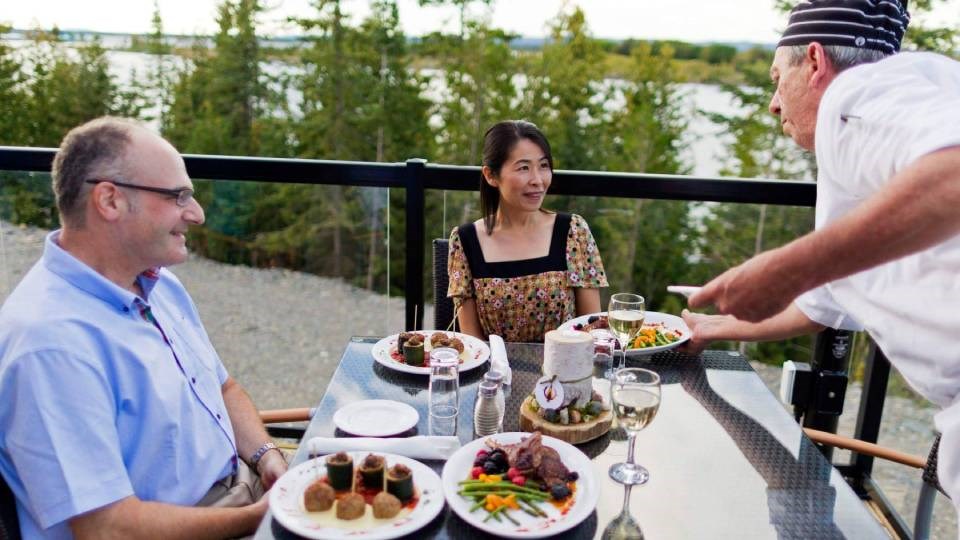Kevin Eshkawkogan has experienced first-hand how diversity in tourism can bring big rewards.
In his 20 years in the tourism industry, the president and CEO of Indigenous Tourism Ontario (ITO) has seen growth in the demand for authentic, Indigenous-led experiences.
Before the onset of the pandemic, Indigenous tourism contributed more than $600 million to the Canadian GDP, with the industry supporting 600 businesses and 13,000 jobs.
ITO numbers show that one in three international visitors to Canada wants to participate in an Indigenous tourism experience, and so “we fully understand there’s a huge demand for Indigenous tourism experiences in this country,” said Eshkawkogan, who hails from Manitoulin Island and is the former CEO of the Great Spirit Circle Trail tour operator.
“Indigenous tourism is not about doing it all on our own, recreating other things that are out there. It's really about, simply enough, telling our story on our terms,” he said during an online panel discussion.
“So, as long as that's happening, it becomes genuinely authentic, but it also helps support the larger tourism economy and, in many ways, the local economy and the regional economy.”
Eshkawkogan shared his thoughts during the first in a series of online panel discussions about diversity, equity, and inclusion (DEI) in the tourism industry, hosted on Jan. 14 by the Tourism Industry Association of Ontario (TIAO).
The series is part of a greater effort by TIAO to better support the needs of the industry, noted Carol Greenwood, TIAO's vice-president of membership and business development.
To that end, the organization, which advocates for roughly 200,000 tourism organizations across the province, launched a DEI Working Group last year.
“We know that our industry across Ontario needs to be better in DEI, but we also know we're at different places, capacities, abilities, and comfort zones,” Greenwood said. “What I do know is that we need to listen, we need to learn, and we need to share our voice.”
As tourist operations continue to recover in the pandemic's wake, Eshkawkogan said he’s encouraged by the unprecedented level of collaboration he's seeing, a "silver lining” of the pandemic.
ITO alone works with dozens of other tourism organizations across the province to bring forward new programming and initiatives.
For example, ITO's A Three Fires Collaborative Quest is a training and mentorship program to help Indigenous tourism businesses fill labour gaps and prepare them for success after reopening.
ITO is collaborating with TIAO and the Ontario Tourism Education Corporation on the project.
Collaboration, along with being good neighbours and having more conversations on "touchy subjects,” were Eshkawkogan's three recommendations on how to move forward on inclusion and diversity.
He pledged an hour of his personal time to every person on the virtual call, during which he said he would answer any question they wanted to ask, no matter how hard or controversial they may be.
“I'm very, very open to having these conversations with anybody, because we're all going to be better human beings for it,” he said. "We're all going to have a better industry for it, and Ontario is going to be a better place to live, work and play.”
When it comes to ensuring diversity in the tourism industry, it isn't just about having representation from a variety of interest groups, says Michael Bach.
Operators that truly want to embrace diversity in the sector should instead be focused on inclusion.
“Diversity is about all of the things that make us who we are. Yes, it's about gender and ethnicity, but it's also about where we grew up and learning style, our personality type. It's about every aspect of who we are,” said Bach, president of the Canadian Centre for Diversity & Inclusion (CCDI).
“Inclusion has to be mindful to ensure that everyone feels valued, respected and able to contribute to the fullest potential. It also means it has to be equitable, because different people have different needs.
“Each individual is different and unique and should feel comfortable to subjectively identify the scope of their dimensions of diversity regardless of who they are.”
Bach believes inclusion isn't something that happens naturally. Employers have to actively work at it to make it happen.
Yet there's ample evidence that prioritizing inclusiveness is good for the bottom line, he said.
Canada today is made up of a mix of people from varied backgrounds, Bach noted. Women, people of colour, people with disabilities, Indigenous peoples, people from the LGBTQ+ community, and religious minorities together make up a huge part of the population.
Because of this, creating an organization that embraces diversity and inclusion — making people of traditionally marginalized communities feel more welcome — can have a positive impact on employee engagement, longevity, customer engagement, and more.
“If you run the numbers… and look at the percentage of the population that identify as straight, white, able-bodied Christian men, that number is less than 25 per cent of the Canadian population, and in some communities, like a Brampton or Markham, that number is less than 10 per cent,” Bach said.
“The numbers don't lie. They simply tell us what we are dealing with.”
The next panel discussion in the TIAO series is the Better Business Discovery Process, which is scheduled for Feb. 16 at 12 p.m.




